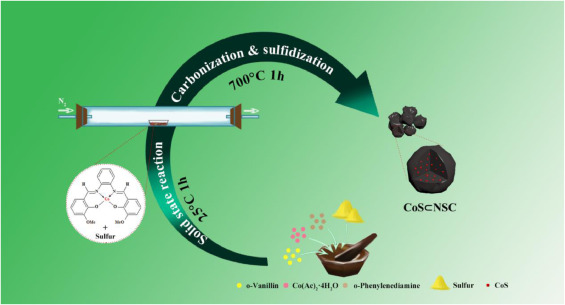周益明教授课题组在JOURNAL OF THE TAIWAN INSTITUTE OF CHEMICAL ENGINEERS发表研究论文
Solid state reaction-enabled in situ construction of ultrafine CoS nanoparticles encapsulated within heteroatom-doped carbon scaffold for high performance sodium-ion batteries
Liu, SX (Liu, Sangxin)[ 1 ] ; Wang, ZZ (Wang, Zhuangzhuang)[ 1 ] ; Hou, QR (Hou, Qirui)[ 1 ] ; Zhang, XF (Zhang, Xiaofang)[ 1 ] ; Zhang, AP (Zhang, Anping)[ 1 ] ; Zhang, LC (Zhang, Licui)[ 1 ] ; Wu, P (Wu, Ping)[ 1 ] ; Zhu, XS (Zhu, Xiaoshu)[ 2 ] ; Wei, SH (Wei, Shaohua)[ 1,3 ] ; Zhou, YM (Zhou, Yiming)[ 1 ]*(周益明)
[ 1 ] Nanjing Normal Univ, Sch Chem & Mat Sci, Jiangsu Collaborat Innovat Ctr Biomed Funct Mat, Jiangsu Key Lab New Power Batteries, Nanjing 210023, Peoples R China
[ 2 ] Nanjing Normal Univ, Ctr Anal & Testing, Nanjing 210023, Peoples R China
[ 3 ] Yancheng Inst Technol, Sch Chem & Chem Engn, Yancheng 224051, Peoples R China
JOURNAL OF THE TAIWAN INSTITUTE OF CHEMICAL ENGINEERS,202005,110,71-78
Developing an efficient and reliable method for achieving high-yield and high-quality synthesis of transition metal sulfides combined with carbonaceous materials is highly desirable but still challenging. Herein, a very simple and cost-effective solid state reaction method for the fabrication of ultrafine CoS nanoparticles encapsulated within heteroatom-doped carbon scaffold is presented. By directly grinding cobalt acetate tetrahydrate, o-vanillin and o-phenylenediamine together with a molar ratio of 1:2:1 at ambient temperature in the presence of sulfur powder, a self-assembly solid state reaction took place to give rise to a bis-Schiff base complex with cobalt (II), which was evenly distributed in the sulfur powder surroundings. After subsequent annealing at elevated temperature, simultaneous carbonization and sulfidization occurred, resulting to the in-situ formation of ultrafine CoS nanoparticles (similar to 3.8 nm) encapsulated within an irregular N, S-codoped carbon scaffold (denoted as CoS subset of NSC). When evaluated as an anode material for sodium-ion batteries (SIBs), the CoS subset of NSC hybrid exhibits good cycling stability (305.6 mA h g(-1) after 400 cycles at 100 mA g(-1)) and excellent rate capability (412.3 and 263.3 mA h g(-1) at current densities of 200 and 5000 mA g(-1), respectively), demonstrating exceptional electrochemical sodium storage performances. The findings in this work pave a novel way to synthesize the promising anode materials for high performance SIBs.

文章链接:
https://www.sciencedirect.com/science/article/pii/S1876107020300663?via%3Dihub
版权与免责声明:本网页的内容由收集互联网上公开发布的信息整理获得。目的在于传递信息及分享,并不意味着赞同其观点或证实其真实性,也不构成其他建议。仅提供交流平台,不为其版权负责。如涉及侵权,请联系我们及时修改或删除。邮箱:sales@allpeptide.com